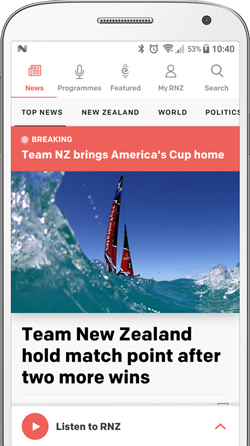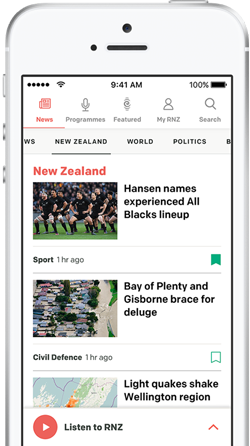
The updated final design of the first digital billboard planned for Richmond is lower than the original proposal and is expected to be erected by October. Photo: Supplied/ Bekon Media
The design for the first digital billboard to be put up in Tasman's Richmond has been finalised, but the news has not been welcomed by those opposing light pollution.
The digital billboard, sought by Bekon Media, is expected to be erected about August or September this year.

It will sit above the intersection of Gladstone Road/State Highway 60 and Queen Street, in Richmond - one of the district's busiest and most dangerous intersections.
Expected to measure 7 metres wide by 3.5m tall, the billboard is to be placed above the PetMart building on 332 Queen Street.
It was originally going to reach 8.8m above ground level, but structural upgrades were found to be needed for the building to allow for wind loading.
Tasman District Council this month approved a consent variation to allow the billboard to be partly placed on the existing building, rather than entirely on a purpose-built parapet, so it will instead only reach 6.8m above ground level.
A shorter parapet will still be built behind the billboard to mitigate impacts on the area's amenity.
An estimated 30,000 vehicles use the intersection each day, though the billboard would only be visible to traffic heading northeast on Gladstone Road, towards Nelson.
"We've received strong interest, especially considering we haven't started marketing it yet," Bekon Media director Simon Jerard said.
But not everyone was onboard with the billboard.
Ralph Bradley is chairperson of the Top of the South Dark Sky Committee, which is responsible for the Wai-iti Dark Sky Park.
The park is New Zealand's first internationally accredited dark sky park and is located 19km south of the intersection.
"It's a step above what we would like, really. We oppose the thing on principle," Bradley said.

The Wai-Iti Dark Sky Park became New Zealand's first internationally-accredited dark sky park in 2020. Photo: Supplied/ Ralph Bradley
Night-time light readings at the park had doubled between 2020, when it was established, and 2023 which Bradley ascribed to the development of more subdivisions in Richmond.
"Any light within 25 kilometres of the park is going to affect what we see above us out here," he said.
"If we don't do something, we'll lose our status altogether."
Bradley had opposed the billboard application, which helped to halve the billboard's night-time luminance level, but that was still higher than international dark sky standards.
"Children are going to grow up without ever seeing the Milky Way, and we think that's a shame, to mess it up. All we need to do is turn the lights off or turn them down."
If Tasman had explicit rules to mitigate the effects of lighting, like those in Kaikōura, Bradley said the billboard would not have got the go-ahead.
He was "hoping" the council would do more to limit light pollution, like it had committed to in a memorandum of understanding with the park, and other councils had begun doing.
The council said it had updated the area's reserve management plan to recognise the dark sky designation and included relevant policies to maintain dark sky values.
Tasman's street lights also meet best practice guidelines.
A lighting engineer is to ensure the digital billboard abides by the luminance parameters outlined in its resource consent.

Nelson Tasman's only existing digital billboard is located outside Nelson Airport. Photo: Supplied/ Max Frethey - Local Democracy Reporting
Bradley also wondered how the billboard would not be a "terrible distraction" at the intersection.
He was not alone. The billboard received 27 submissions when it was publicly notified last year, all in opposition. Distracted drivers and traffic safety were key concerns for submitters.
Jerard said Bekon understood the concerns around traffic safety, which was why the company engaged "two of New Zealand's most experienced traffic engineers" to alleviate concerns.
Dean Chrystal, the independent commissioner hearing the proposal on behalf of the council, said after hearing the evidence that the final rules for the billboard meant that it would have a "less than minor" impact on driver attention and traffic safety.
LDR is local body journalism co-funded by RNZ and NZ On Air.








